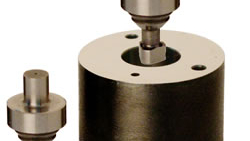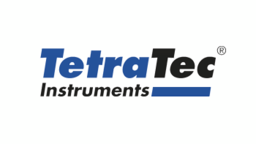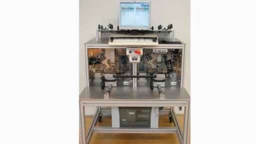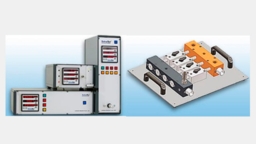
In the case of pump-nozzle units for diesel direct injection, for example, the quality of the clearance fit between the piston and the accumulator unit is essential for the function. In order to meet the high quality requirements for the clearance fits, the pump housings are divided into 20 classes, each with a bandwidth of 0.3 micrometers, and the piston is paired with the piston housing. This pairing shall be checked with an accuracy of less than 1 micron prior to assembly.
With the LMF flowmeter equipped with a laminar flow element, the clearance fit can be checked in the production line. After the individual parts have been manufactured, the pump piston and pump housing are paired according to the classification and plugged together for testing. For testing, the volume flow measuring section of the tester is adapted to the pump housing of the part pairing and the measuring air flow is activated. The inlet pressure is selected in such a way that a supercritical state, i.e. the speed of sound, occurs in the annular gap. Due to the direct relationship between volume flow, sound velocity and annular gap area in the supercritical state, the clearance can be tested with an accuracy of less than one micrometer. The necessary inlet pressure to establish the supercritical flow state in the test specimen is determined in laboratory tests. After a test time of 3-4 seconds, the part pairing is passed on to assembly or discharged according to the test decision.
With the flow measurement on the test specimen in the supercritical flow state, a measuring method is used that is largely independent of atmospheric and weather conditions. In the application, a high long-term stability and high reproducibility is achieved. The in-house DKD laboratory rounds off the range of services in terms of precise system adjustment and on-site recalibration.





